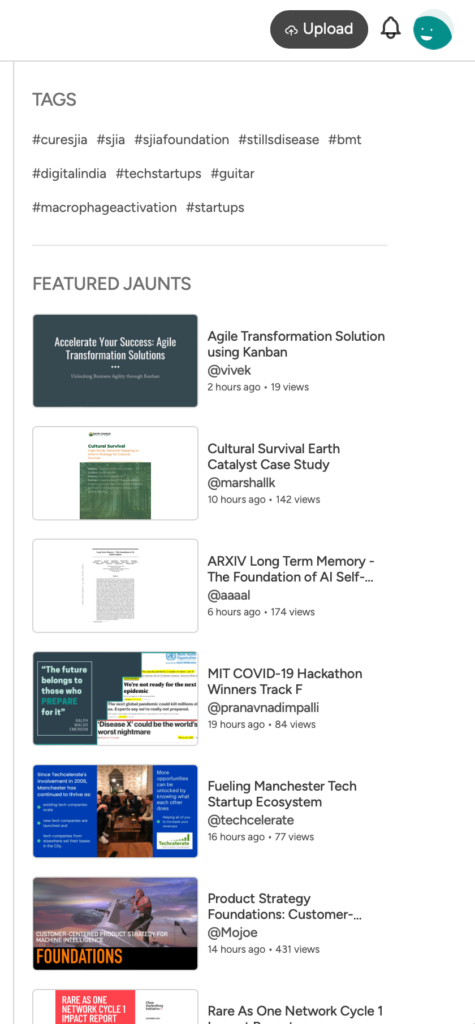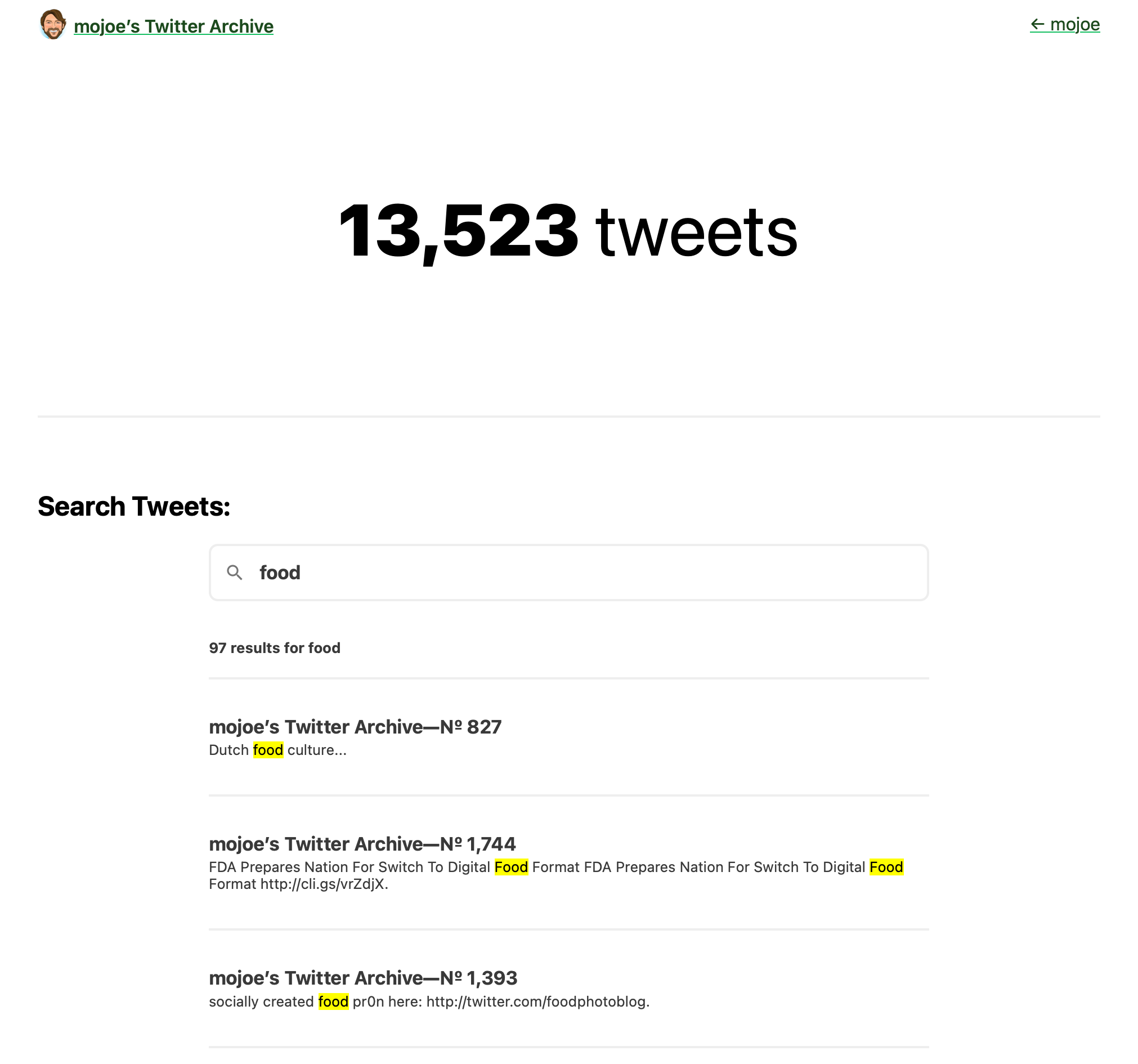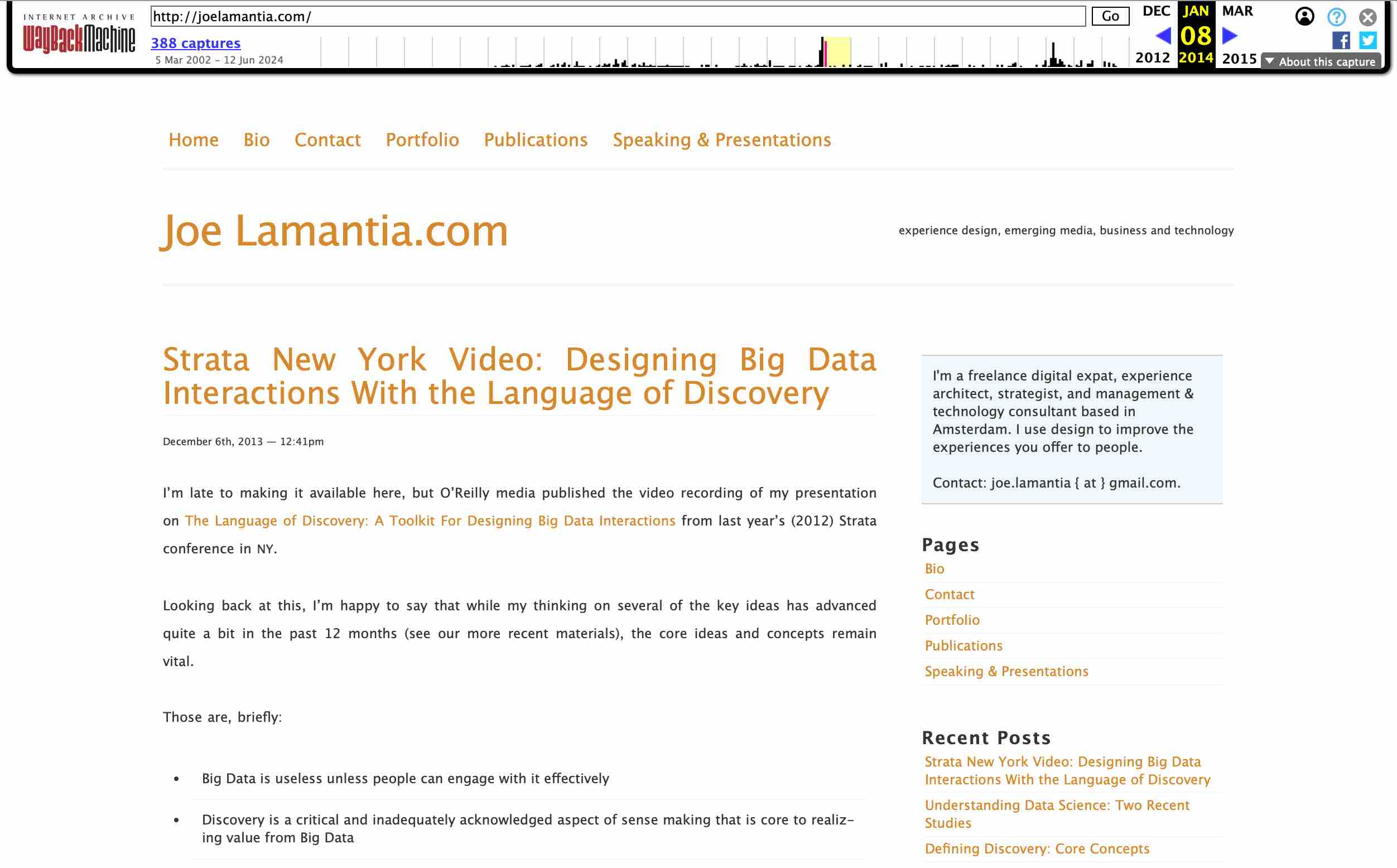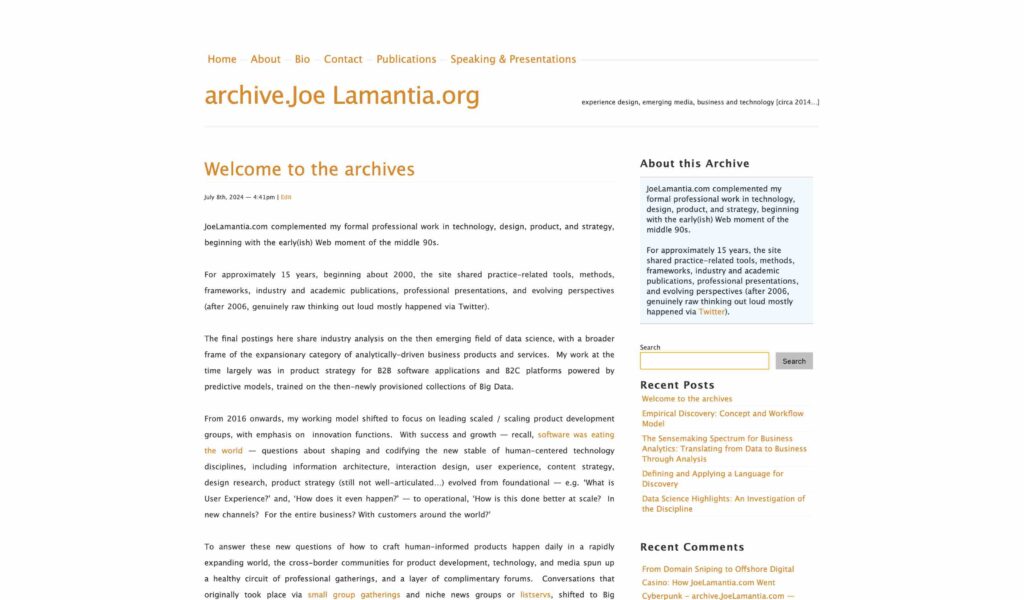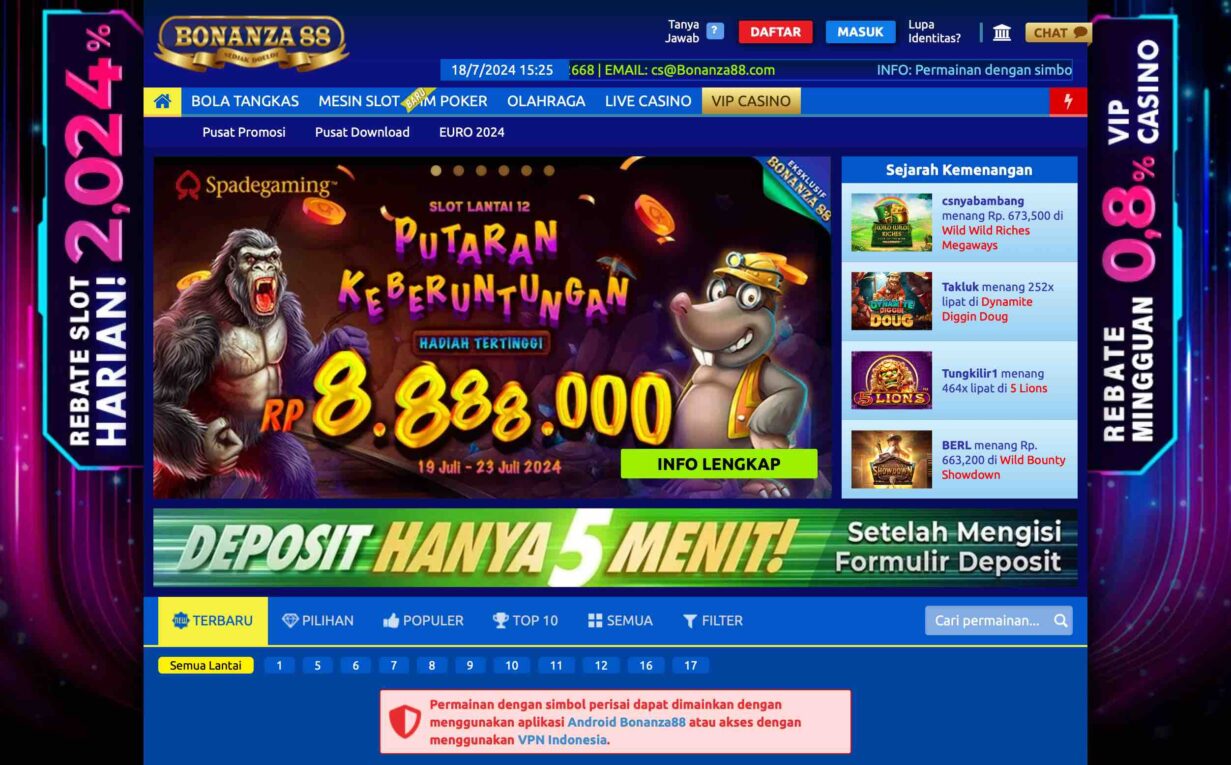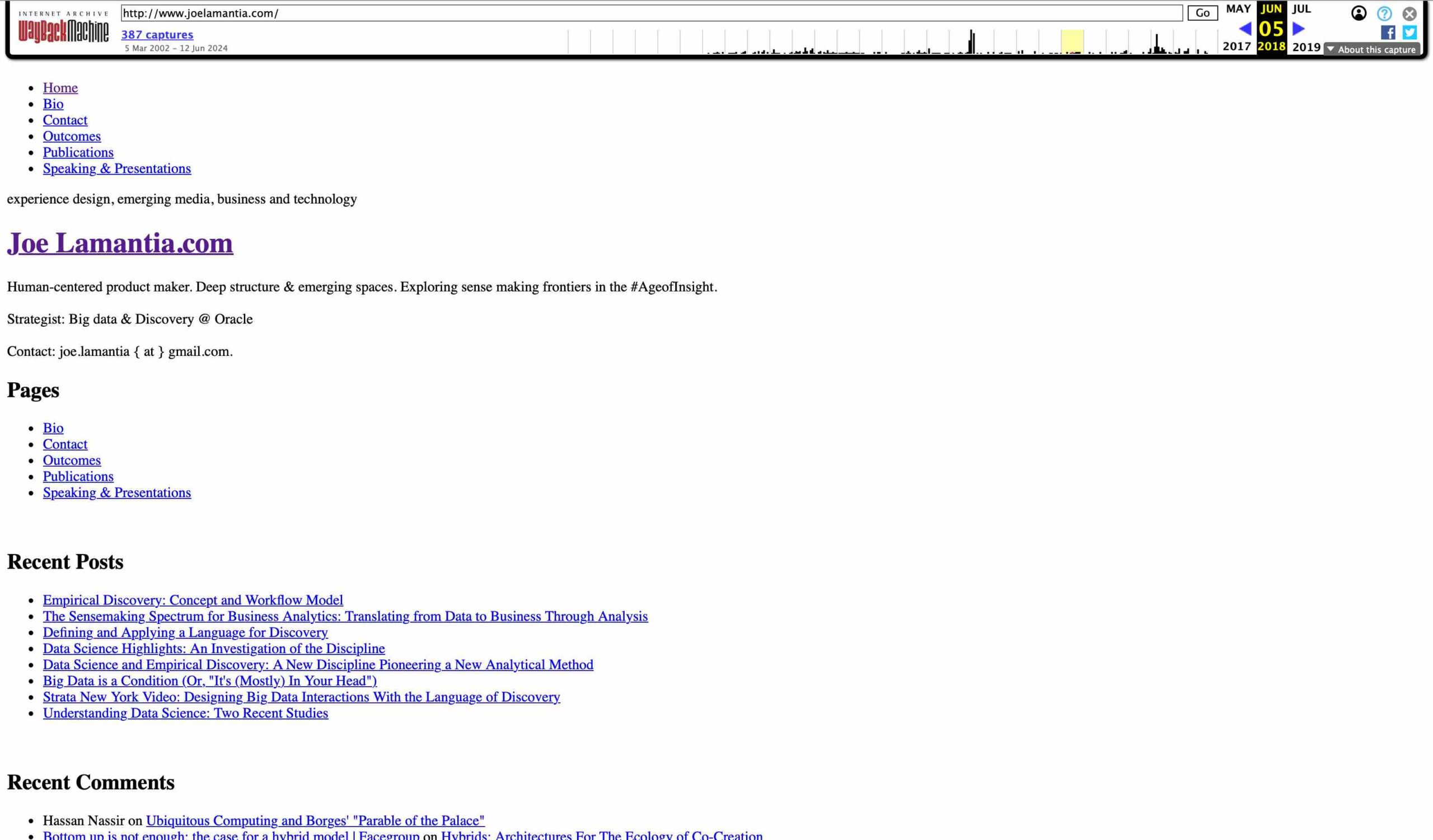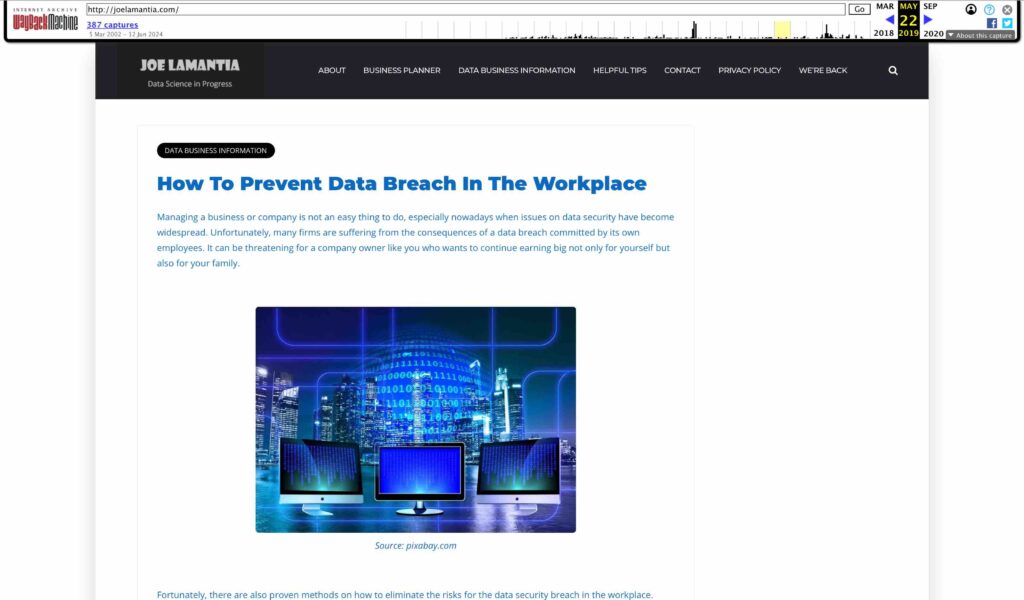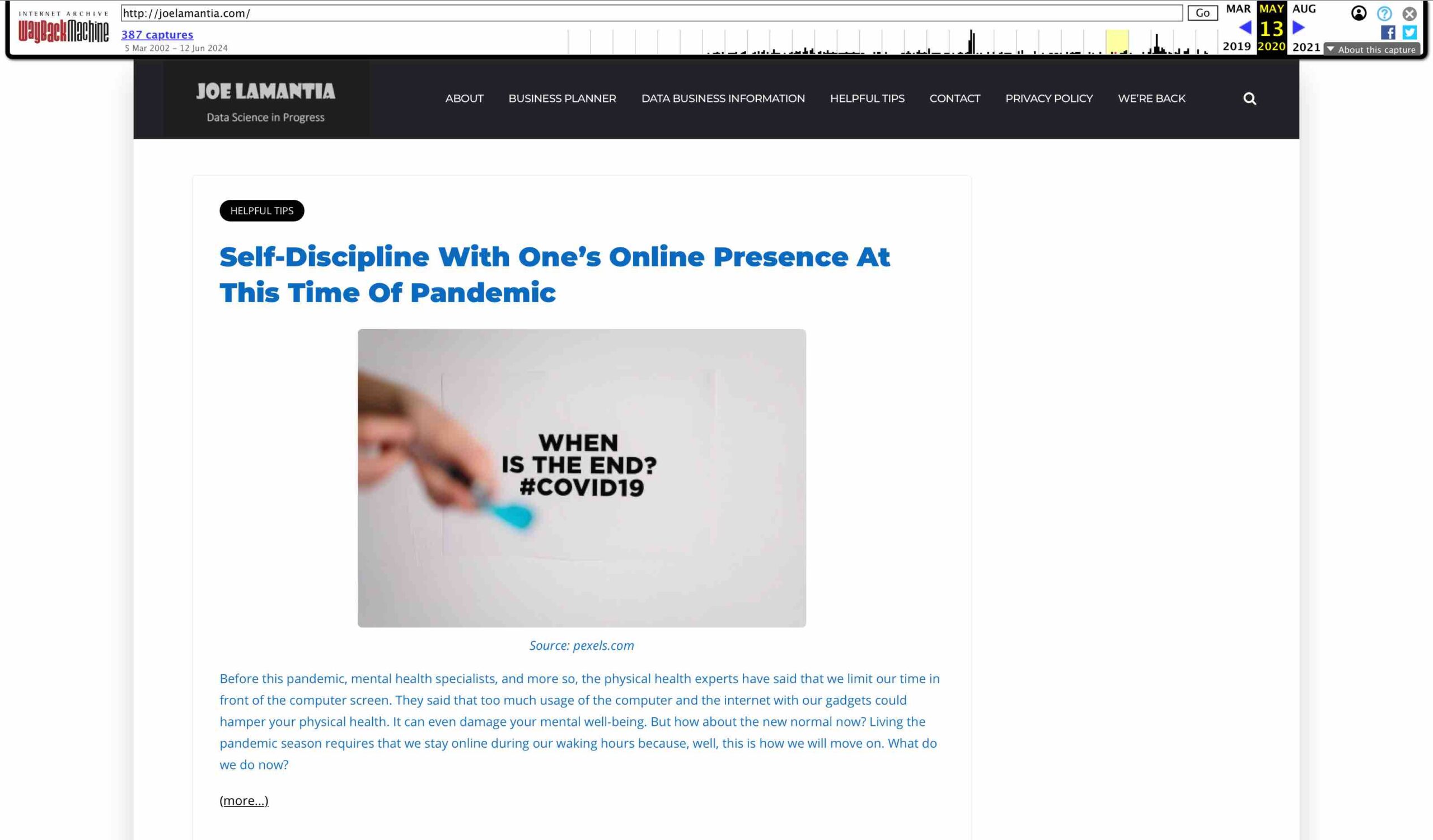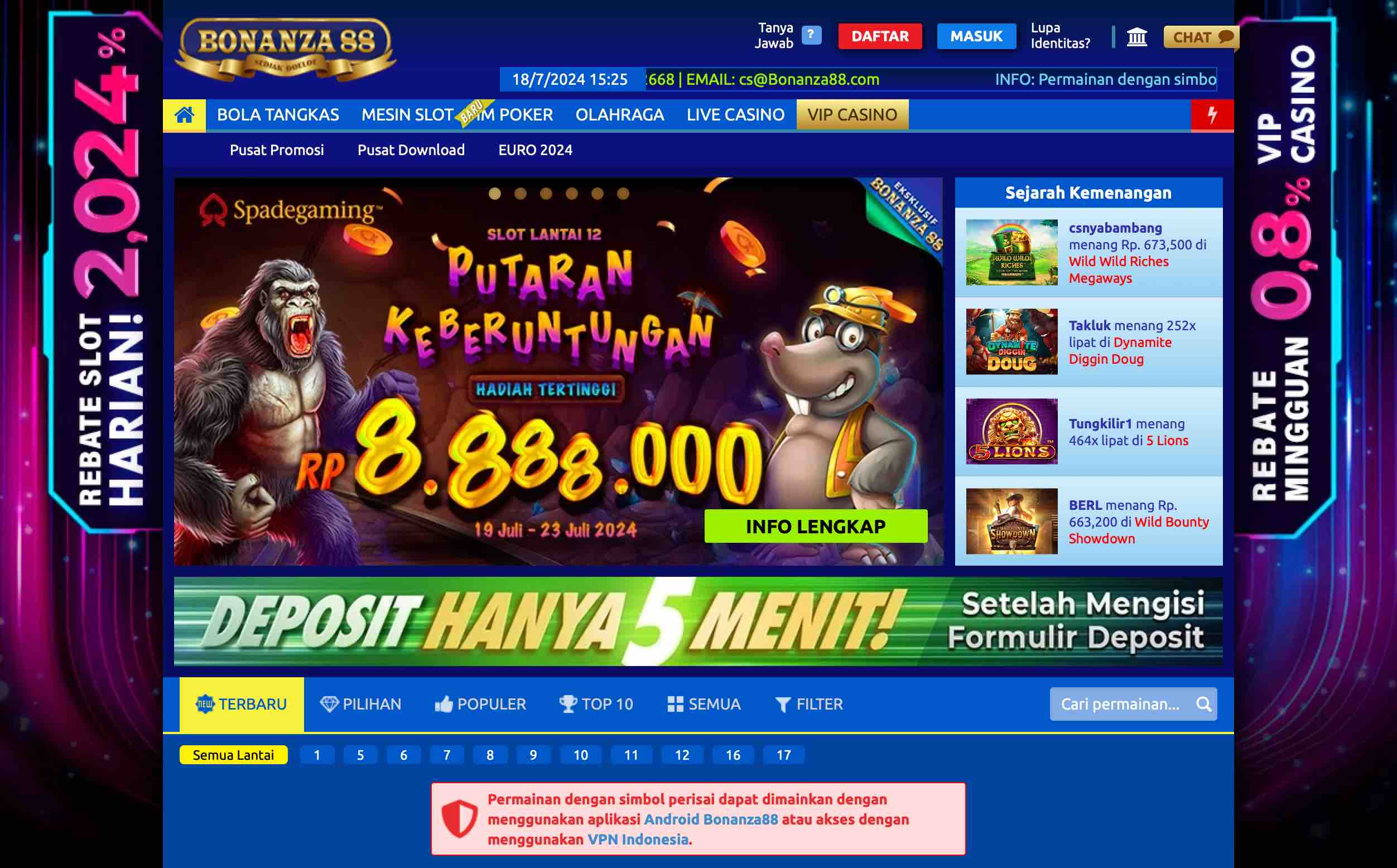JoeLamantia.com complemented my formal professional work in technology, design, product, and strategy, beginning with the early(ish) Web moment of the middle 90s.
For approximately 15 years, beginning about 2000, the site shared practice-related tools, methods, frameworks, industry and academic publications, professional presentations, and evolving perspectives (after 2006, genuinely raw thinking out loud mostly happened via Twitter).
The final postings publish industry analysis on the then-emerging field of data science, with a broader frame of the expansionary category of analytically-driven business products and services. My roles at the time emphasized product strategy for B2B software applications and B2C platforms powered by predictive models built from collections of business, consumer, and research data – composite assets newly recognized as Big Data. I described this as the machine intelligence space, to clarify the focus on new technology and product development outcomes, and distinguish the broader category of AI.
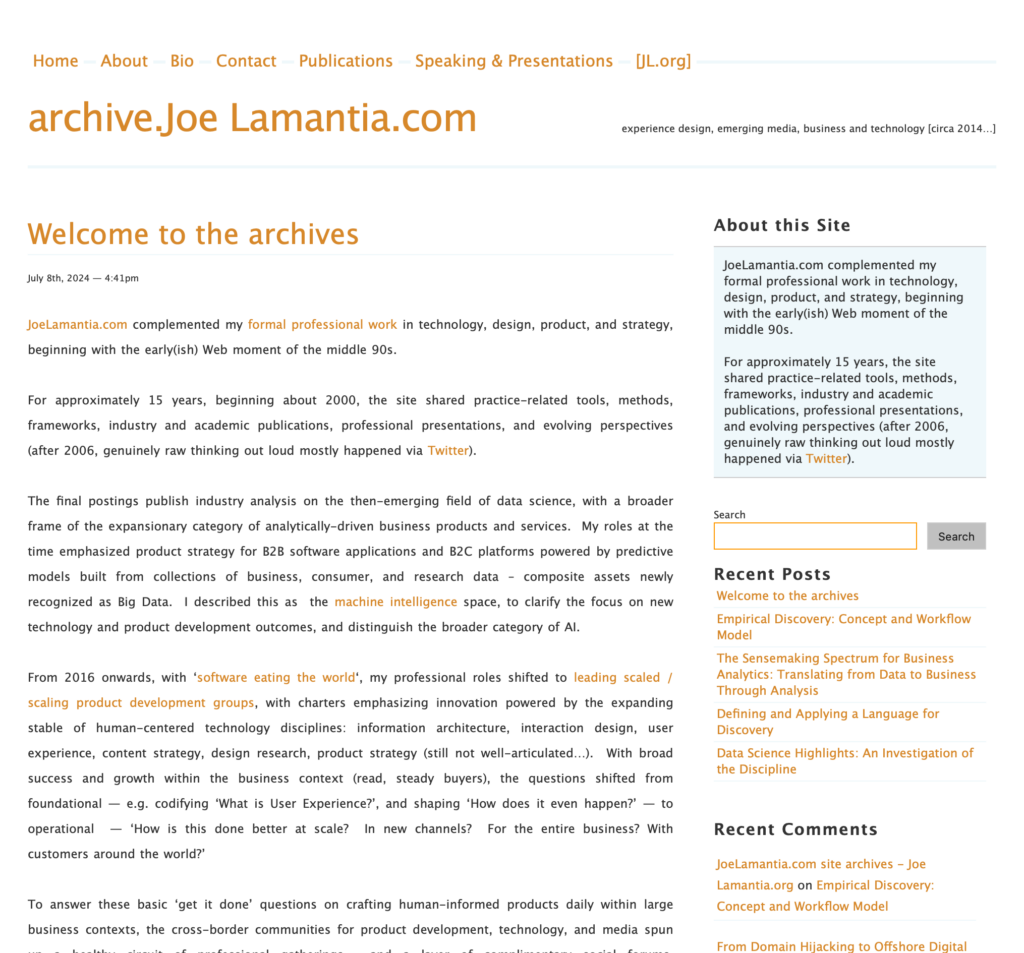
From 2016 onwards, with ‘software eating the world‘, my professional roles shifted to leading scaled / scaling product development groups, with charters emphasizing innovation powered by the expanding stable of human-centered technology disciplines: information architecture, interaction design, user experience, content strategy, design research, product strategy (still not well-articulated…). With broad success and growth within the business context (read, steady buyers), the questions shifted from foundational — e.g. codifying ‘What is User Experience?’, and shaping ‘How does it even happen?’ — to operational — ‘How is this done better at scale? In new channels? For the entire business? With customers around the world?’
To answer these basic ‘get it done’ questions on crafting human-informed products daily within large business contexts, the cross-border communities for product development, technology, and media spun up a healthy circuit of professional gatherings, and a layer of complimentary social forums. Conversations that originally took place via small group gatherings and niche news groups or listservs, shifted to Big Conferences, and Big Social Platforms.
In that landscape, there was less to share directly in the blog format. Also, there was the rest of life: family, home, community.
Then in 2018, after a series of minor maintenance and administration incidents, that show how the social Web and the entire Internet environment was changing to a regime of financialized surveillance capitalism, and algorithmically amplified predation, there was no ‘there’, there. JoeLamantia.com went dark, as far as sharing my work was concerned. The domain was doing a different job, for different audiences. and stayed that way.
Before I decided to focus fully on looking ahead and making new things for the new spaces of the early Web, I’d planned to study history, media, and technology – essentially looking in the other direction, as a scholar. I *almost* did a PhD at U. Chicago or Pitt (thanks to both programs for seeing potential and offering opportunity). This path not taken taught me the deep value of a historical perspective, especially when you’re considering where to go next, and how to get there.
Now, almost exactly ten years since the last original post in June of 2014, following a modest technical reanimation effort, I’m happy to offer a restored archive version of JoeLamantia.com. It’s not *everything* that was written, said, or shared — but it’s most of what mattered. We’re back.
To move forward, we’ll be reflecting on some of the “practice-related tools, methods, frameworks, industry and academic publications, professional presentations, and evolving perspectives” shared, to assess and learn from them by looking in both directions.
Thanks for your consideration: then, and now.

